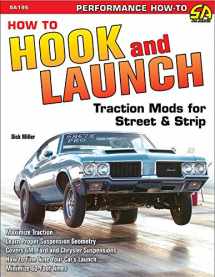
How to Hook & Launch: Traction Mods for Street & Strip (Performance How to)
Book details
Summary
Description
While building big horsepower has become easier, putting that power down to the pavement is still quite a challenge. Getting great "bite" involves a lot more than sticky tires and a smoky burnout. The suspension system is being put to work in a way it was never designed to operate. A better understanding of exactly what is happening to the suspension when the car launches from a standing start will assist you in maximizing your car's effectiveness on the street or at the track.
In How to Hook and Launch: Traction Mods for the Street & Strip, author Dick Miller explains the physics behind what gets a car moving from a standing start, and how to best harness the various powers at work. Getting the rear tires to really bite and gain maximum traction is divided into several small steps, and Miller walks you through each phase of the launch.
Today's enthusiasts face a wide range of potential traction improvements, from softer tires and basic bolt-ons to complete or partial chassis replacements. Most opt for something in-between, where some well-engineered components are chosen to replace the factory equipment and offer a greater capability and range of adjustment. It is this range of upgrades where Miller spends most of his time, explaining what the parts and pieces do, and how to use them to their highest potential.


We would LOVE it if you could help us and other readers by reviewing the book
Book review



